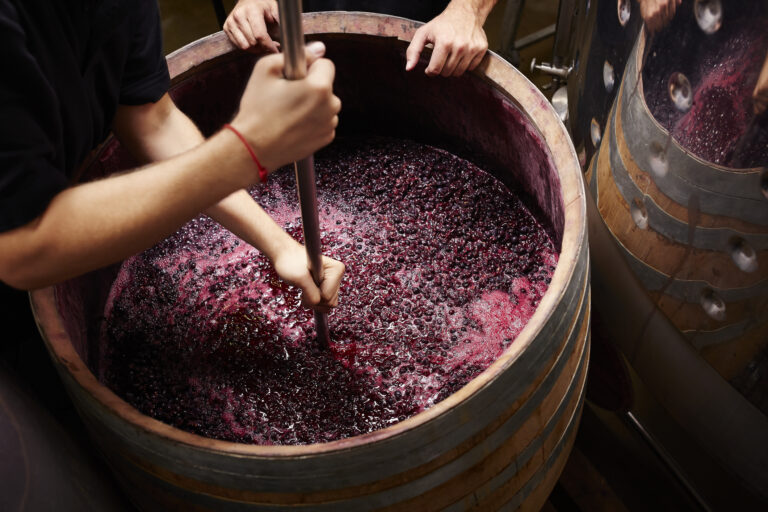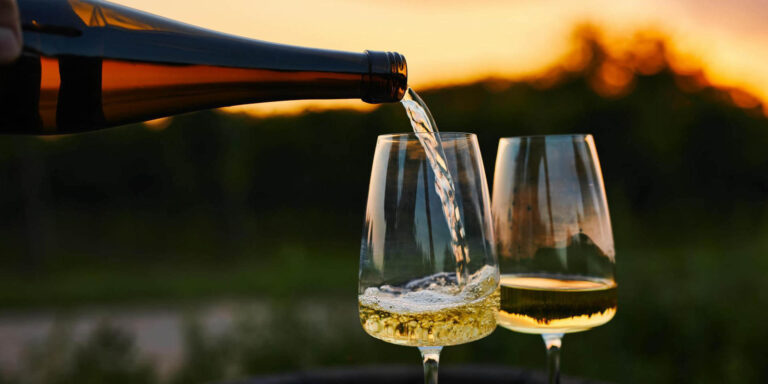This website uses cookies so that we can provide you with the best user experience possible. Cookie information is stored in your browser and performs functions such as recognising you when you return to our website and helping our team to understand which sections of the website you find most interesting and useful.
20/11/2024
Innovation in wine branding and packaging
IWSR analysis shows that as wine brands increasingly target new recruits to the category, they are using their packaging and branding to remove barriers to consumption
IWSR data shows that many wine markets are becoming more reliant on drinkers aged 55 and above. While younger LDA consumers are still being recruited into the wine category, the frequency of consumption is on a downward trend in many markets. For example, in Australia, the proportion of LDA consumers up to the age of 24 who reported consuming wine at least monthly halved between 2010 and 2023, according to IWSR consumer research.
This poses a major challenge for wine producers looking to capture the attention of the Gen Z market. Born between 1997 and 2012, consumers in this generation are aged from 12 to 27 years old. Health-conscious, and sober-curious – having come of age during the rise of non-alcoholic spirits – this group is exposed to a greater array of categories than older generations.
With LDA Gen Z less familiar with wine-specific regions and varietals – and increasingly swayed by moderation concerns – they are also sensitive to price increases. Data suggests they are moving away from occasions usually associated with wine consumption, forcing the wine category to adopt a new approach to reach them, and prove its relevance to their lifestyle.
Brands are having to innovate to appeal to these young LDA consumers in a way that feels authentic and relevant to their lifestyles.
Adventurous and accessible
Established wine categories and the terminology associated with them mean less to Gen Z drinkers than it did to generations before them. Gen Zs are showing growing interest in non-traditional wine-producing regions and they tend to be more interested in a wider range of wines, produced all over the world.
Frezzcanti, for example, is described as the first sparkling wine produced in Colombia, a country that is not traditionally a producer of wines. It uses a ’70s-inspired label design, and, according to the brand, the lack of tradition has given it the freedom to break boundaries, and eschew traditional ‘language’ of Cavas, Champagnes or Proseccos.
Brands are embracing more casual and accessible language to describe their wines. New Theory, for example, names its wines after themes instead of varietals, using names such as Growing Pains, Love Bite, White Lies, and Pot Luck. Growing Pains is described as bold and full, with juicy red fruit from old bush vines.
Whiny Baby, meanwhile, has named its varietals not after grapes, but the mood in which they’re best consumed. They include Unwind, Obsessed, and OMG. Rather than corks, they use a capped closure. An attached string of beads can be used as a phone charm, whilst wine bottles feature bright peelable stickers. There’s also a phone number on the bottle to share photos which appear on the brand’s social media.
Moderation
LDA Gen Zs tend to be open to exploring zero-ABV and low-alcohol wine options for a more mindful, health-conscious approach. This group’s interest in lower-ABV wines, and moderation in general, has prompted some low-alcohol brands to highlight ABV rather than hide it.
Kim Crawford Wines’ Illuminate range, for example, uses its lower ABV as a differentiating factor in its branding. Californian wine brand Bread & Butter added a new lower-calorie and lower-ABV version of its original Chardonnay to its line-up. Inspired by session beer, London-based wine brand Nice has announced the launch of a new lower-ABV wine range. Containing 3.4% ABV, Nice Session Wines are offered in Sauvignon Blanc and Merlot variants.
Evolving Formats
Wine-drinking occasions are also evolving, with Gen Z moving away from the daily mealtime occasion. Some wine brands have responded by offering different formats for more versatile consumption occasions. From RTDs to Bag-in-Box and eco-friendly resealable aluminium bottles, brands are exploring both smaller and larger formats, on-the-go packaging, and increasingly sustainable materials.
Lovvo, for example, is a line of slim 250ml canned semi-sparkling wines from Italy launched in the US by the Restless Dreamers Beverage Co.
Australian sommelier-founded wine brand Gonzo Vino launched in 2018 with the aim of making BIB wines cool and accessible to new audiences entering the wine market. Packaging includes a Bag-in-Box-style ‘cask’ as an eco-friendly alternative to glass. All the wines are made with grapes sourced from sustainably grown, chemical-free vineyards in Victoria, using minimal-intervention winemaking methods.
Meanwhile, Pernod Ricard’s Greasy Fingers wine range intends to disrupt the category, with liquids designed for pairing with ‘gourmet’ fast food.
As wine brands increasingly target new recruits to the category, they are using their packaging and branding to remove barriers to consumption. Low ABV and RTD options, bold pack design, sparkling options, and pairings with more causal meal moments, are some of the methods brands are using to tap into this consumer group.
The above analysis reflects IWSR data from the 2024 data release. For more in-depth data and current analysis, please get in touch.
CATEGORY: Wine | MARKET: All |





